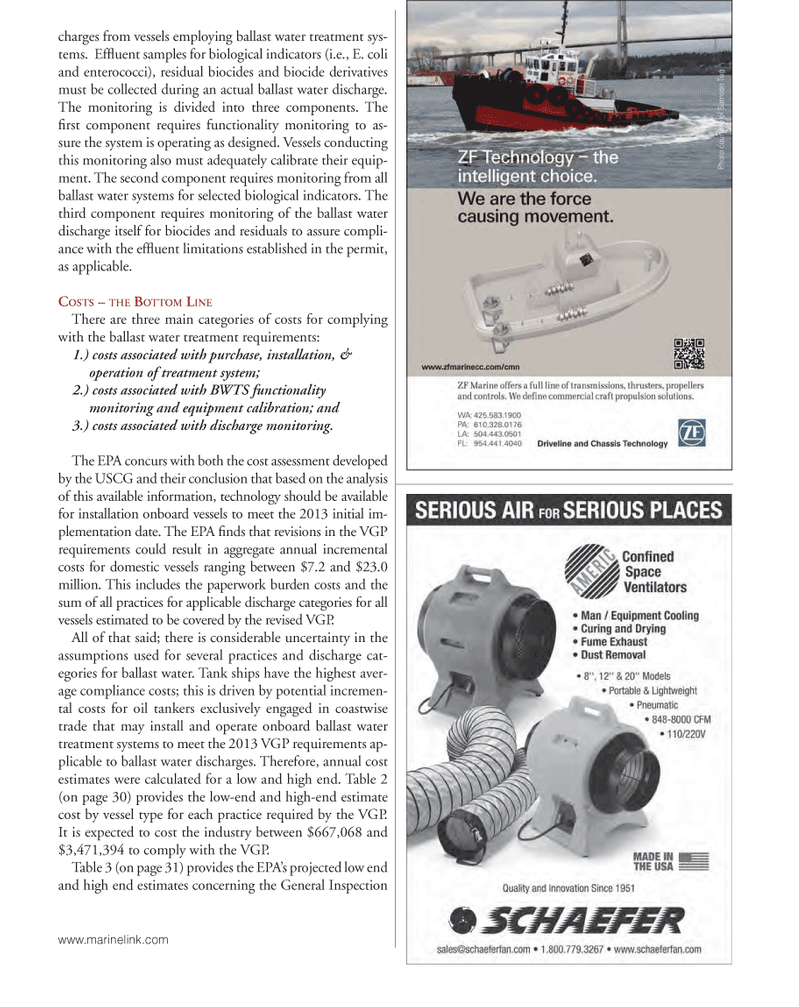
Page 29: of Marine News Magazine (July 2013)
Propulsion Technology
Read this page in Pdf, Flash or Html5 edition of July 2013 Marine News Magazine
charges from vessels employing ballast water treatment sys- tems. Ef? uent samples for biological indicators (i.e., E. coli and enterococci), residual biocides and biocide derivatives must be collected during an actual ballast water discharge. The monitoring is divided into three components. The ? rst component requires functionality monitoring to as- sure the system is operating as designed. Vessels conducting this monitoring also must adequately calibrate their equip-ment. The second component requires monitoring from all ballast water systems for selected biological indicators. The third component requires monitoring of the ballast water discharge itself for biocides and residuals to assure compli- ance with the ef? uent limitations established in the permit, as applicable. COSTS ? THE BOTTOM LINEThere are three main categories of costs for complying with the ballast water treatment requirements: 1.) costs associated with purchase, installation, & operation of treatment system; 2.) costs associated with BWTS functionality monitoring and equipment calibration; and3.) costs associated with discharge monitoring.The EPA concurs with both the cost assessment developed by the USCG and their conclusion that based on the analysis of this available information, technology should be available for installation onboard vessels to meet the 2013 initial im- plementation date. The EPA ? nds that revisions in the VGP requirements could result in aggregate annual incremental costs for domestic vessels ranging between $7.2 and $23.0 million. This includes the paperwork burden costs and the sum of all practices for applicable discharge categories for all vessels estimated to be covered by the revised VGP. All of that said; there is considerable uncertainty in the assumptions used for several practices and discharge cat- egories for ballast water. Tank ships have the highest aver- age compliance costs; this is driven by potential incremen- tal costs for oil tankers exclusively engaged in coastwise trade that may install and operate onboard ballast water treatment systems to meet the 2013 VGP requirements ap- plicable to ballast water discharges. Therefore, annual cost estimates were calculated for a low and high end. Table 2 (on page 30) provides the low-end and high-end estimate cost by vessel type for each practice required by the VGP. It is expected to cost the industry between $667,068 and $3,471,394 to comply with the VGP. Table 3 (on page 31) provides the EPAs projected low end and high end estimates concerning the General Inspection www.marinelink.com MN July2013 Layout 18-31.indd 296/27/2013 1:03:24 PM

 28
28

 30
30
